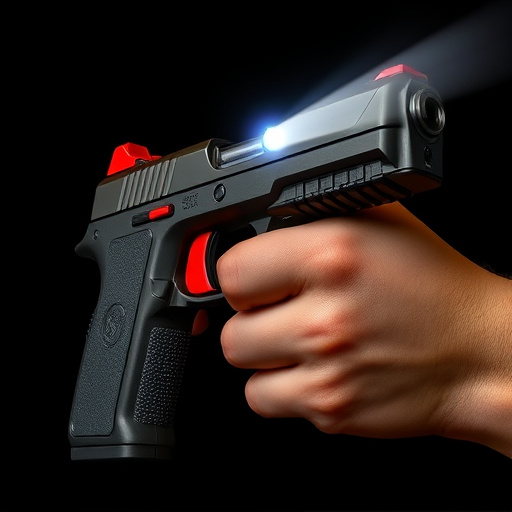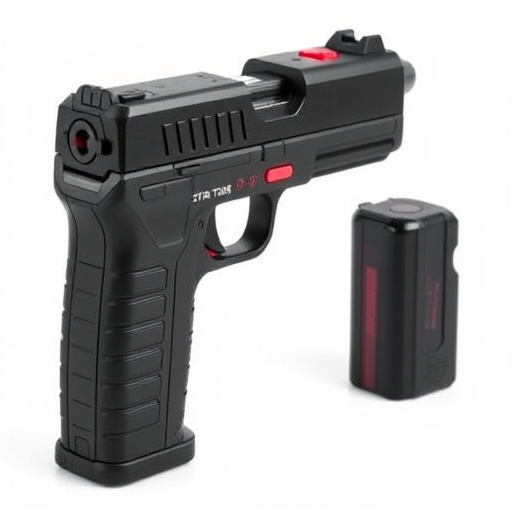The rising popularity of slider stun guns has exposed gaps in concealed weapon detection methods, as traditional metal detectors fail to identify non-metallic designs. Advanced technologies like thermal imaging, X-ray scanners, and vibration sensors are being developed to overcome these challenges. However, the constant evolution of stun gun designs requires continuous innovation, such as advanced fabrics, wearable technology, and biometric data analysis, to ensure effective detection in bustling public spaces.
In an era where personal safety is paramount, the concealed carrying of stun guns raises significant concerns. This article delves into the growing worry surrounding slider stun guns and their detection, exploring the technology behind current systems. We analyze challenges, from material camouflage to limited sensor capabilities, and present potential solutions for enhanced detection. By examining these issues, we aim to foster a safer environment, ensuring that stun guns remain undetected and unauthorized.
- Understanding Concealed Stun Gun Detection: A Growing Concern
- The Technology Behind Stun Gun Detection Systems
- Challenges and Limitations in Current Detection Methods
- Potential Solutions and Future Prospects for Stun Gun Detection
Understanding Concealed Stun Gun Detection: A Growing Concern

In recent years, the concern over concealed stun gun detection has been on the rise, especially with the increasing popularity of personal protection devices like slider stun guns. As more individuals opt to carry self-defense tools for their safety, the challenge of identifying and detecting these concealed weapons becomes increasingly pressing. Traditional metal detectors and security screenings often fail to pick up on stun guns, which are typically made of non-metallic materials, making them difficult to detect visually as well.
This growing concern is not just about personal security but also about public safety. With stun guns easily obtainable and sometimes hidden under clothing, identifying them in high-risk areas like airports, malls, or crowded events becomes a complex task. Advanced technology, such as specialized scanners and improved imaging techniques, is being explored to address this issue. However, the race to keep up with innovative stun gun designs and their corresponding detection methods remains a constant challenge for security professionals and law enforcement agencies.
The Technology Behind Stun Gun Detection Systems

Stun gun detection systems leverage advanced technologies like metal detectors, X-ray scanners, and specialized sensors to identify concealed weapons. Among these, slider stun guns pose a unique challenge due to their compact design and ability to be hidden under clothing. These detection methods work by scanning for metallic components or changes in body geometry indicative of weapon possession. Metal detectors, for instance, generate signals that vary based on the metal’s position and type, allowing operators to pinpoint suspicious objects.
X-ray scanners provide a deeper level of inspection by creating detailed images of an individual’s body, enabling visual identification of unusual contours or objects. Specialized sensors, including thermal imaging and vibration detection, can also be employed to detect heat signatures or subtle movements associated with concealed weapons like slider stun guns. These technologies continuously evolve, becoming more sophisticated and accurate in securing public spaces and enhancing safety measures.
Challenges and Limitations in Current Detection Methods

Current detection methods for concealed stun guns face several challenges and limitations, particularly in navigating bustling environments. Traditional metal detectors often prove ineffective as stun guns are designed to be compact and may not always contain metallic components. This requires officers to resort to manual pat-downs, which can be time-consuming and subjective, especially in high-stress situations.
Additionally, the presence of various objects on a person’s body, such as clothing with metal fasteners or even certain medical devices, can interfere with detection accuracy. Moreover, slider stun guns, due to their sleek design, can easily evade standard screening methods, leading to concerns about their undetected use in public spaces. These limitations highlight the need for advanced technologies that can seamlessly integrate into law enforcement procedures.
Potential Solutions and Future Prospects for Stun Gun Detection

Addressing the challenge of concealed stun gun detection requires a multi-faceted approach, leveraging technological advancements and innovative strategies. One promising solution lies in enhancing security equipment with advanced sensor technologies, such as thermal imaging and metal detectors equipped with AI capabilities. These tools can detect unusual heat signatures and subtle metallic objects, potentially identifying hidden stun guns with greater accuracy.
Looking ahead, the future of stun gun detection may involve even more sophisticated methods. Researchers are exploring materials science to develop advanced fabrics or coatings that could interact with specific frequencies or signals when activated, providing a non-intrusive way to signal the presence of concealed weapons. Additionally, the integration of wearable technology and biometric data analysis might offer real-time alerts for security personnel, further revolutionizing safety measures against stun gun usage.
As we’ve explored, the concealed detection of stun guns presents a complex challenge. While current technologies offer some capabilities, they face significant limitations in terms of accuracy, reliability, and intrusiveness. Moving forward, focusing on innovative solutions like advanced material science, improved sensor fusion techniques, and more comprehensive training for authorities could help create effective slider stun gun detection systems. This balanced approach between technological advancement and responsible implementation is crucial to ensuring public safety without compromising privacy.
